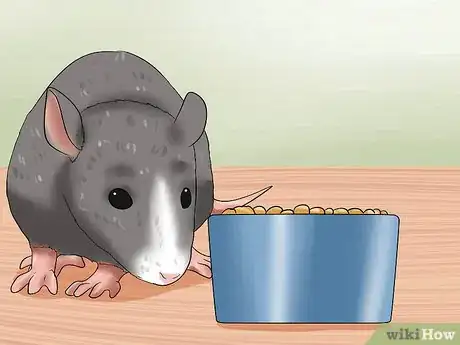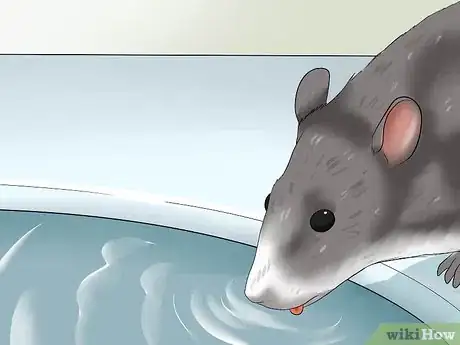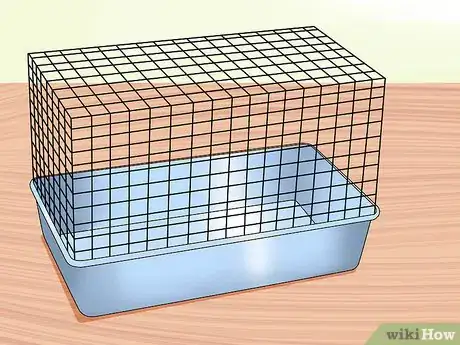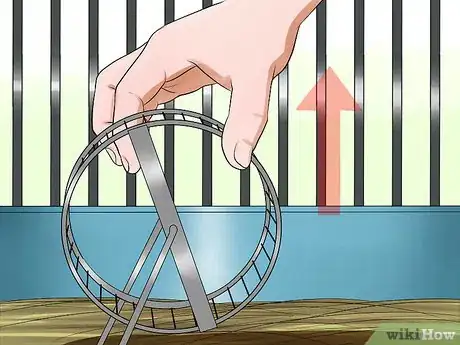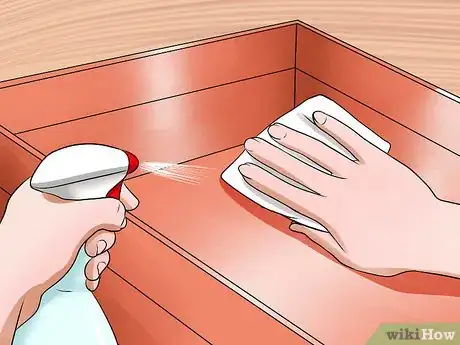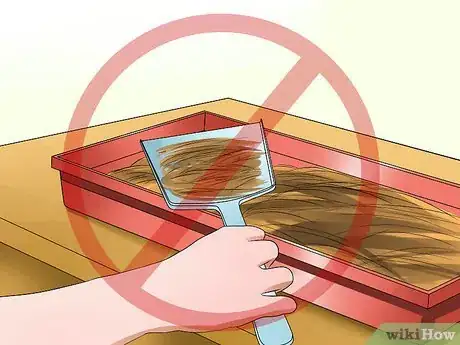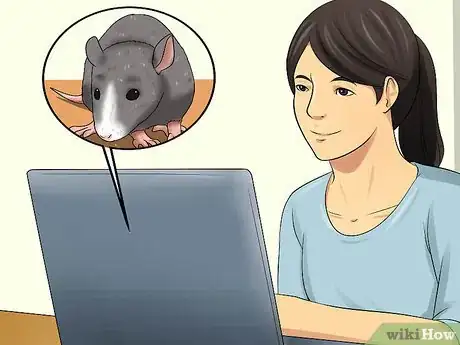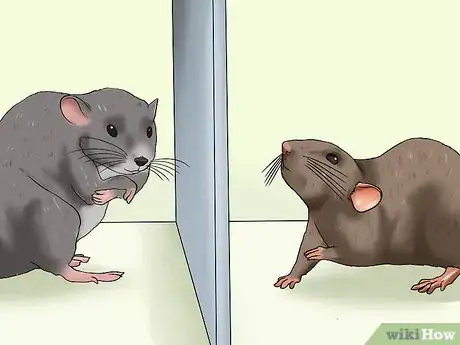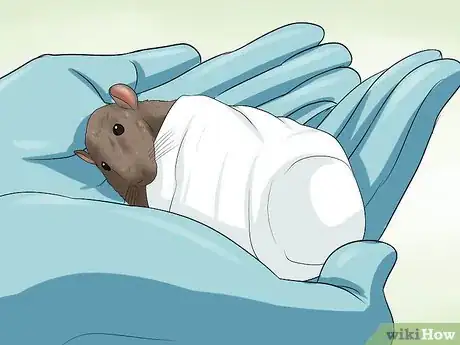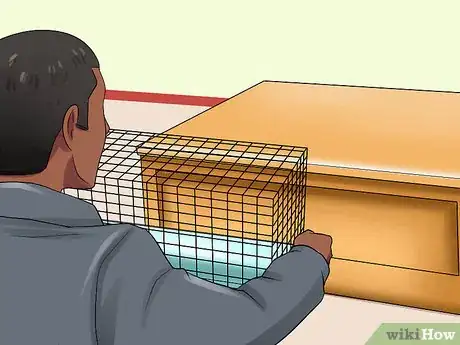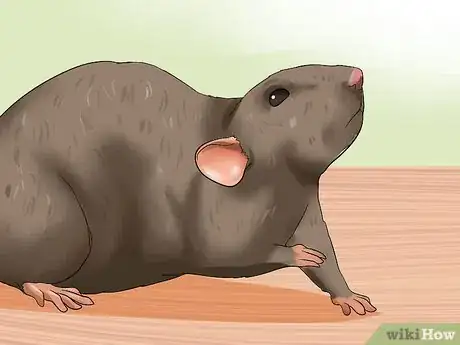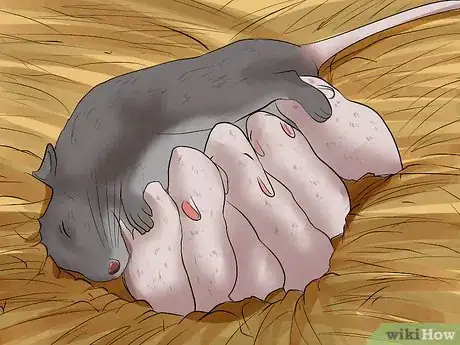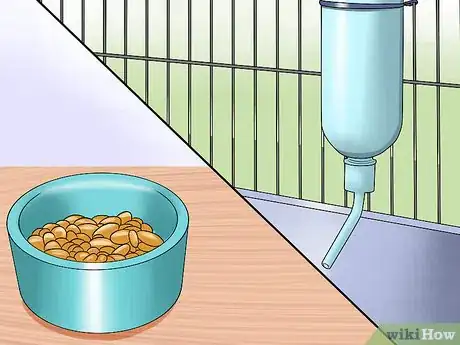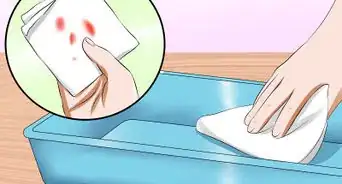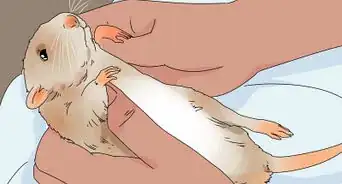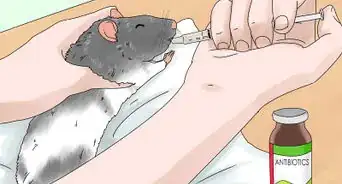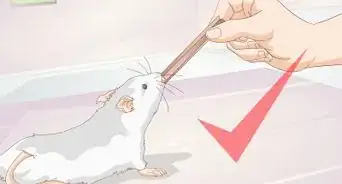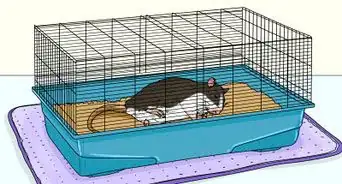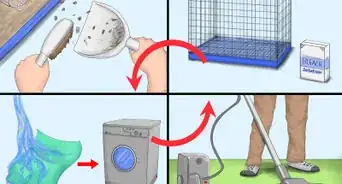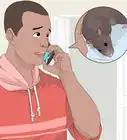This article was co-authored by Pippa Elliott, MRCVS. Dr. Elliott, BVMS, MRCVS is a veterinarian with over 30 years of experience in veterinary surgery and companion animal practice. She graduated from the University of Glasgow in 1987 with a degree in veterinary medicine and surgery. She has worked at the same animal clinic in her hometown for over 20 years.
wikiHow marks an article as reader-approved once it receives enough positive feedback. In this case, 89% of readers who voted found the article helpful, earning it our reader-approved status.
This article has been viewed 43,878 times.
Rats can make wonderful pets. However, by accident or on purpose, your female rats might become pregnant, which can complicate your role as a caretaker. When caring for a pregnant rat, you'll have to see to a number of factors that will ensure the health and safety of her and her unborn pups. Promoting good nutrition, making sure your pregnant rat has a good habitat, and managing the birthing process are all things you will need to take care of to promote a healthy pregnancy. Hopefully, with a little work and some knowledge, your rat's pregnancy will go without a problem.
Steps
Taking Care of Basic Needs
-
1Provide the right nutrition. Pregnant rats, like any other animals, have higher nutritional requirements. Once the doe's pregnancy is confirmed, you need to give it a richer diet that is formulated for the requirements of pregnancy.
- Provide a higher protein diet. Include a little bit of milk in her diet on a regular basis along with soya chunks. Whole grain cereals and cornflakes soaked in milk are a great meal for pregnant and lactating rats. A little bit of dog food at this time is also a good idea since it is higher in protein than ordinary dry rat food.
- Vitamins and minerals are also extremely important so include a good dose of fresh fruits and veggies. Make sure your rat has plenty to eat as their appetites increase quite a bit during pregnancy.
- Unless the female rat has any medical complications, medicines and other supplements are not usually needed for a successful pregnancy.[1]
-
2Make sure your doe has plenty of fresh water. Your doe should continue to have access to plenty of fresh and clean water during her pregnancy. In fact, providing water and making sure your doe is properly hydrated is even more important during this stage of her life. Make sure to:
- Check her water often.
- Provide multiple sources of water in the cage.
- If you are afraid your rat is dehydrated, contact your veterinarian. Commons signs of dehydration include: loss of elasticity in the skin, weight loss, and diarrhea.
Advertisement -
3Provide proper housing. Proper housing during pregnancy is extremely important to make sure your doe does not have any complications. Proper housing will help ensure that your doe is happy and comfortable.
- A cage the same size as your normal cage will work well. Most vets and other experts recommend at least two cubic feet (.057 cubic meters) of space per rat.
- Try to use a cage that has glass or plastic sides, to prevent your rat from escaping.
- Avoid wire floor cages for the pregnancy cage, as pups often get stuck if the wires are too small or too wide.[2]
-
4Remove any potential dangers from the enclosure. During the doe's pregnancy, you should remove all and any potential dangers from her enclosure. Removing potential dangers will help make sure that your doe does not get hurt and jeopardize the pregnancy. Make sure to:
- Remove exercise wheels from the cage.
- Remove any structures that enable your rat to climb high in the cage.
- If you have any doubt about the safety of a specific item in the cage, take it out.[3]
-
5Maintain a sanitary environment. A sanitary environment is extremely important when caring for a pregnant rat. Without a sanitary environment, bacteria and waste can build up in your rat's enclosure and potentially cause complications for your pregnant rat.
- Be sure to provide plenty of clean, fresh bedding material. Shredded tissue paper/ newspaper is a good substrate. Do not use cloth as it is a hazard to the pups once they are born.
- Female rats produce a more pungent odor while pregnant, so it is important to change the substrate at least every other day.
- Keep the cage in a secure place away from commotion and drafts while at the same time ensuring healthy ventilation and lighting.
-
6Avoid messing with the doe's nest. Pregnant rats will typically construct a nest prior to giving birth. Nests are often made of substrate and other materials common in the enclosure. The nests will be the place the doe gives birth and cares for her pups. Make sure not to interfere with the nest, change it, or mess with it in any way.
- When cleaning the doe's cage, stay away from the section of the cage (roughly a quarter, depending on size) where her nest is located.[4]
-
7Learn about rat pregnancy. Knowing about rat pregnancy is the most important thing to do if you are preparing to care for a pregnant rat. As a result, you need to acquaint yourself with a number of basic facts. Consider:
- Rat pregnancy lasts an average of 21 to 23 days.
- Birth often takes place at night time.
- The typical rat pregnancy produces 10 to 12 pups.
- Delivery often lasts about 1 to 4 hours.[5]
Managing Interaction with Your Rat
-
1Isolate the doe. After two weeks from the day of successful mating, it is a good idea to isolate the doe in a separate smaller cage. This is to protect both the doe and other rats from each other. Does tend to get very temperamental when pregnant and may lash out at other rats.
- Remove all male rats from the enclosure.
- Remove all other female rats from the enclosure.
- Avoid housing multiple pregnant rats together.
-
2Handle your rat sparingly. Do not handle the doe more often than necessary while she is pregnant and avoid picking her up or startling her in any way. This is for a couple of reasons. First, you don't want to take the chance of dropping or injuring the doe – this could hurt her pups. Second, your doe might experience mood changes and could be somewhat more temperamental (and might not like being handled).
- Avoid handling your doe, unless it is absolutely necessary.
- If your doe is accepting, you can pet her.
- If the doe does not want to have physical contact, simply sit by her cage and offer companionship.
-
3Place your rat's enclosure in a quiet and safe location. Your rat's enclosure or cage should always be in a quiet and safe location, however, during pregnancy this is even more important. This is because you want to avoid causing the doe any extra stress or tension. Consider:
- Placing the enclosure in a quiet room in the house away from the family room, kitchen, or other high traffic areas.
- Moving the enclosure outside of a child's room or playroom.
- Putting the enclosure in a room where no other animals are present.[6]
Managing the Birthing Process
-
1Watch for signs of birth. The most important part of managing your rat's birthing process is to know when the birth is going to occur. If you know what to look for, you'll be much better prepared to help:
- Your doe will be relatively large compared to her normal size.
- Your doe will begin constructing a nest.
- Your rat will act strange or seem slightly agitated.
- Nearly three weeks will have passed since conception.[7]
-
2Help during the birth, if needed. Care during birth is extremely important. If possible, you should be present and available during the birthing process. This will ensure that if there are any life threatening complications, you can be there to assist your doe. If no babies are delivered within 2 hours after labor begins, it is possible that one is stuck in her uterus. If you are present, there are a number of things you can do.
- By gently messaging the doe's stomach, you may be able to help reposition the stuck pup.
- If a pup is stuck in the birth canal, try to lubricate it with a very small amount of baby oil.
- If a pup is stuck and may die, you might need to remove it with blunt forceps. This will most likely injure (and kill) the baby, but it will enable the other pups to come out.[8]
-
3Provide care shortly after birth. Care after birth is also extremely important as complications (and other issues) that occur during pregnancy can have important health impacts afterward. As a result, you need to be prepared to provide care immediately after birth.
- In the event that any of the pups are born dead or die within a few hours, make sure you dispose the body.
- If the mother dies during birth, quickly locate another nursing mother as a potential surrogate.
- Be vigilant of the pups and the doe for 24 hours after they are born, but do not disturb them much. Make sure the doe has plenty of clean food, water and bedding.
- Make sure none of the pups are suffocating in the substrate or under the doe. [9]
-
4Maintain vigilance in the days after birth. Providing care during the first few days after birth is also extremely important. Make sure to be cognizant of the doe and her pups' vulnerability during this period. Remember:
- Don't handle the doe or pups until at least 24 hours after birth.
- Be careful while removing the pups from the doe as she may bite and show aggression even if she is usually tame.
- It is a good idea to distract her with a treat while handling the pups.
- If the doe shows signs of aggression or tries to eat her pups, remove them. This is quite rare but still happens. After removing the pups, try to locate a surrogate with pups the same age to nurse them. Otherwise, contact your vet for advice.
-
5Provide a nutritious diet for several weeks. After your doe gives birth, you need to make sure that you continue her pregnancy diet. This is because the doe will be nursing her pups for several weeks. Without proper nutrition, your doe and her pups could become ill or die.
- Continue the pregnancy diet for the doe for 3 weeks after the pups are born.
- Once the pups are completely weaned, the doe can be returned to her regular diet and be separated from the pups. The doe and pups will take care of weaning on their own, and pups will begin eating food you put in the cage for them. If the pups are not weaning properly, contact your vet.
- Make sure to provide an extra nutritious diet to the pups for several weeks after they've been weaned.
References
- ↑ http://animals.mom.me/foods-rats-pregnancy-1895.html
- ↑ http://www.northstarrescue.org/pet-care-information/pet-rat-care/138-a-guide-to-pet-rat-cages.
- ↑ http://www.peteducation.com/article.cfm?c=18+1804&aid=889
- ↑ http://web.jhu.edu/animalcare/procedures/rat.html#reproduction
- ↑ http://web.jhu.edu/animalcare/procedures/rat.html#reproduction
- ↑ http://web.jhu.edu/animalcare/procedures/rat.html#reproduction
- ↑ http://animals.mom.me/rat-going-give-birth-10051.html
- ↑ http://www.peteducation.com/article.cfm?c=18+1804&aid=889
- ↑ http://www.peteducation.com/article.cfm?c=18+1804&aid=889
About This Article
To care for a pregnant rat, it's best to isolate the doe in a separate cage and remove anything that could cause injury, like exercise wheels or climbing structures. Keep her cage clean and make sure she has fresh, soft bedding. It's also important to feed pregnant rats a high protein diet, so add a little milk to her food. Fresh fruits and veggies can provide other vitamins and minerals she needs for a successful, healthy pregnancy. For more tips from our Veterinary co-author, like how to handle a pregnant rat, read on!
